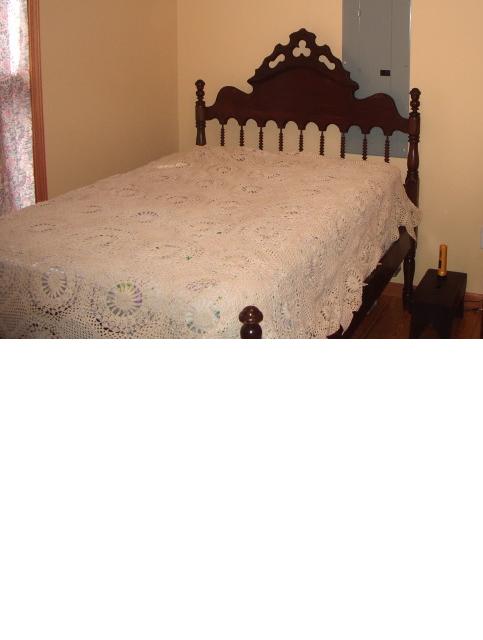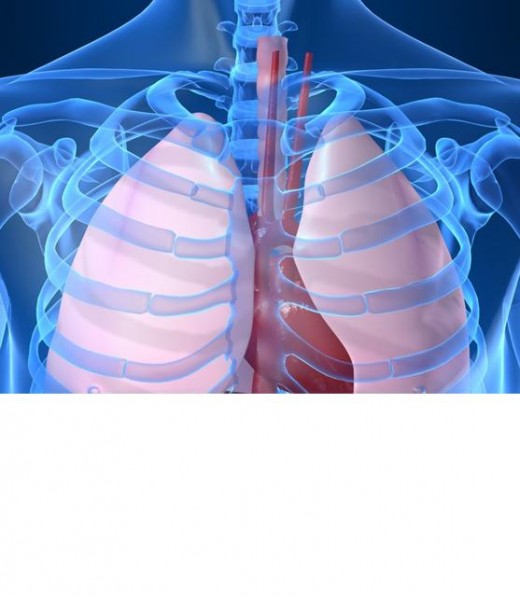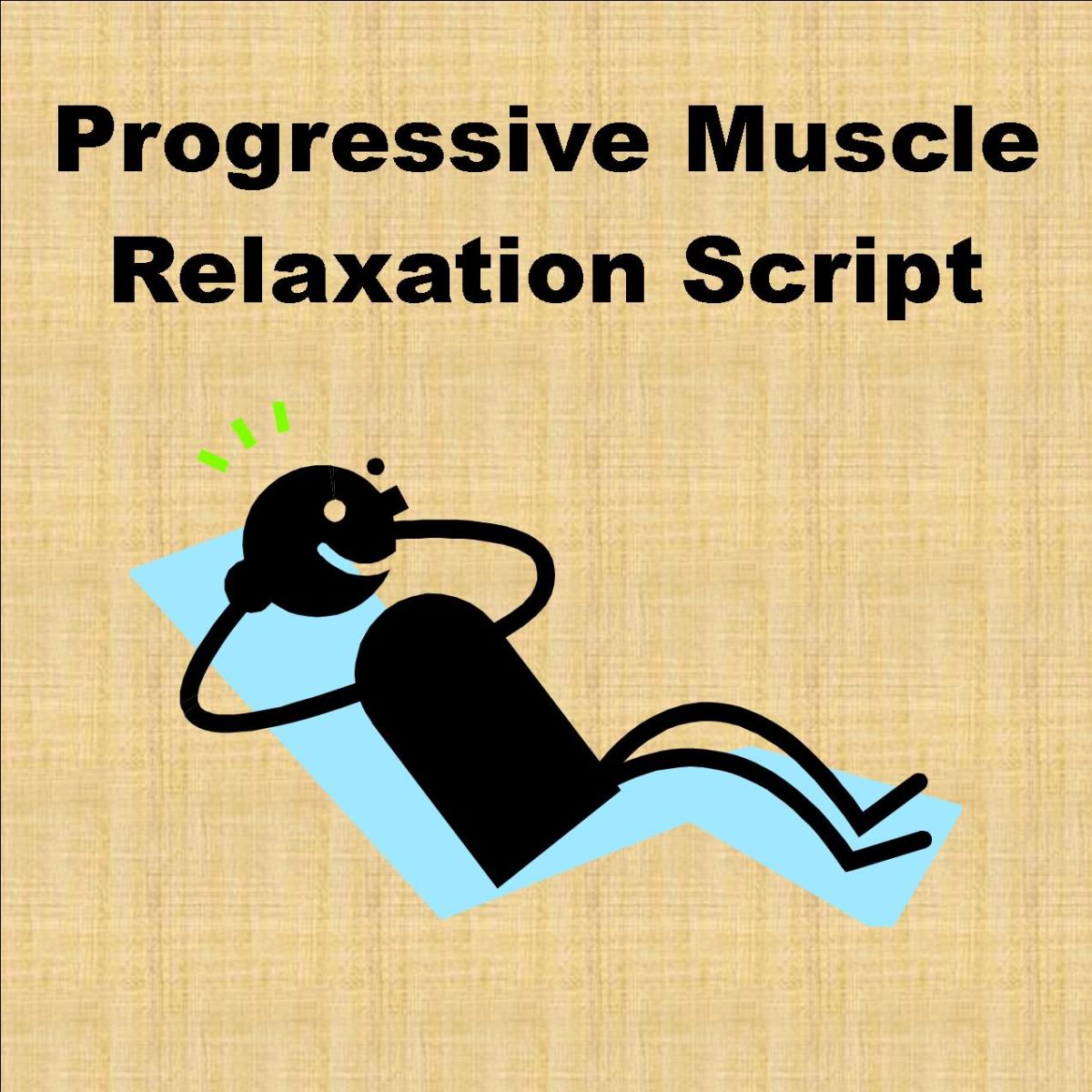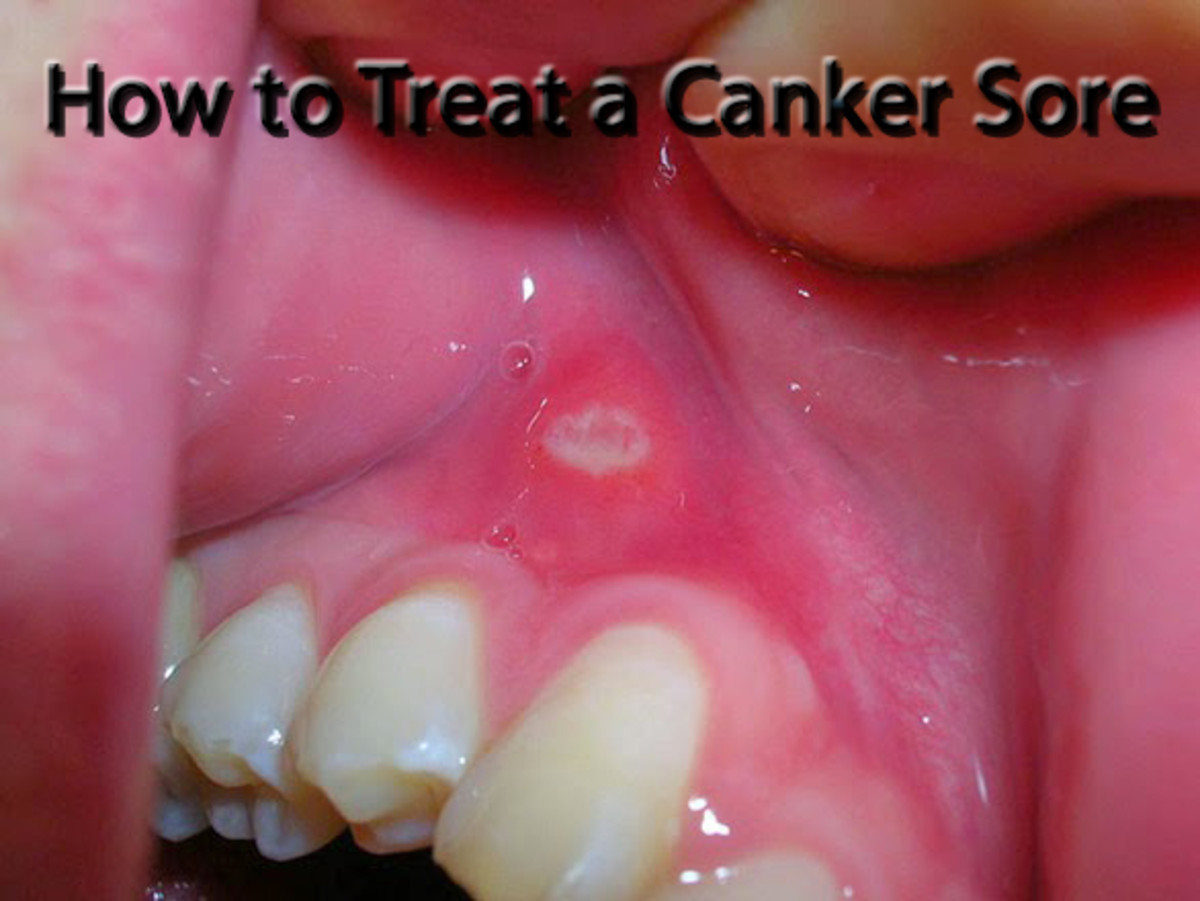Just Relax!!!
Try googling relax, relaxation, or relaxation techniques, and you will find millions of words of helpful advice. Many or most of those articles contribute great ideas that can benefit anyone who wants to get rid of tension and live a more relaxed, less stressful life.
Who Needs Another Article About Relaxation?
Many people know that they want or even should “relax.” But what happens if a person does not really know what it feels like to be relaxed? Is that even possible? I can state from my own experience that it can happen and it does happen. I have known other people besides myself who genuinely wanted to relax, who could feel tension creeping in to tighten muscles they didn’t even know existed – but who didn’t have a clue how to release tension and achieve relaxation, who honestly didn’t know how to recognize the goal they were striving for – if they ever reached it.
For some, the best techniques come from visualization of various kinds: finding a “happy place” in the mind, thinking of balmy island breezes, or imagining lying peacefully in a hammock. For others, suggestions about breathing slowly or about counting while inhaling and exhaling may be helpful. But for anyone who has tried these suggestions without quite the hoped-for success, I present a few additional techniques to try out. They do admittedly include some visualization and breathing tips, with what may be a new slant for some folks.

Quo Bono?
These following ideas were originally aimed specifically at musicians, but they can be valuable for a performer of any art or sport, or anyone else, who needs to release tension rather quickly and effectively.
The focus here is on developing clearer body awareness. When the mind focuses intently on some task – a math problem, a business plan, an arpeggio, or a golf swing – it may lose awareness of what is happening with muscles throughout the body. Intensity of mental focus may be reflected in, or translated into, tension in our muscles. So it helps periodically to check oneself to find out whether any tension has crept in and to release it as soon as possible.
Most of these exercises should be practiced in private initially, so that you can learn without self-consciousness what to expect. As you become more certain and confident, you can try out some of them when you are in a more public setting.
There will be frequent, repeated mention of moving slowly and gently. That really can’t be emphasized enough, although I’ll try. When your movements are sudden or jerky, an opposite muscle may contract as a reaction, to counteract whatever you have done, creating more tension, sore muscles, or even injury.
You may find that you need to go through each exercise several times before you reach an adequate awareness of a relaxed state. That’s okay! You didn’t become hyper-tense overnight, so you may find that you can’t develop relaxation awareness overnight either. Recognize that each tidbit of awareness will help you on the road to becoming a more relaxed person, or a less tense performer. Your hyper-tense mode developed unconsciously. Now you can use conscious techniques to undo some of its damage.

Overall Relaxation
If you are truly a super-tense person (probably without knowing it), then the very beginning of beginnings should be to become aware of relaxed muscles when you lie in bed to go to sleep. Lie on your back for the purpose of this exercise, even if you will later change position when you are ready to fall asleep.
Become aware of, notice, and feel the mattress beneath you. Allow it to do its work. It is supporting you, every ounce, every bit of you, and you do not need to help it. First allow your feet to become as heavy as possible, then your knees. Allow each part of you to nestle easily into the mattress. You are not pushing yourself into the mattress, you are setting yourself down gently on the mattress, which is fully capable of supporting you, every bit. Mentally work your way up your body and feel each part become heavy; allow yourself to imagine tension draining out of each part and into the mattress.
Memorize what this feeling of heaviness throughout your body feels like. File this idea away in your mind. It is one step in the process of becoming aware of the feeling of being relaxed.
Jaws and More
For most people (not the super-tense ones) a good place to begin is the face, specifically the jaw. Are you clenching your teeth? Even just a little bit? Counteract this by slowly and gently lowering your jaw. Don’t open your jaw; rather, allow it to open itself. Allow your mouth easily and gently to open as far as possible without stretching. You should end up with what I apologetically call a “stupid face.” That is, if you look in the mirror, you may think you are seeing someone who doesn’t have enough sense to close their mouth to keep the flies out! This is just temporary. Notice what this feels like to your face, to your entire mouth, to your jaw muscles. Memorize this feeling.
Now slowly and gently close your jaw, but only until your lips meet. Inside your mouth, your teeth should still be slightly apart – anywhere from ¼” to ¾”. Again (with lips still touching) use slow and gentle movements to raise your lower jaw, so that your teeth just barely touch. If you have followed these steps, your lower face should be in a rather relaxed state – but still publicly presentable.
As you go about your workday, try to create a relaxed jaw without opening your mouth all the way to the Stupid Face state. Allow your jaw to drop slowly and gently, but keep your lips together. Pay attention to the sensation of the muscles just below and in front of your ears. Imagine that you feel tension actually dissolving and flowing out of your jaw and falling down onto the ground where it will stay. You do not have to pick that tension back up ever again. But if you do, you can allow it to drain out once more.
If you experience tension in your forehead, you can release it in a manner similar to the way you did with your jaw. You can consciously, but gently, first raise your eyebrows as if you are surprised. Then allow them to drop back to a normal lower position, with the aid of gravity. Aim for a Stupid Face feeling in your forehead. Imagine that you can’t control your face muscles. You can’t move them, either to raise or lower them. Gravity is doing the work.

Arms
Next, try becoming a rag doll, a Raggedy Ann or Andy, or a marionette with no puppeteer. Sit in a well-supporting seat – on a bench or in a firm chair – with both feet on the floor about 6-9” apart, and slowly bend over as far as you can without forcing your body. Allow your arms to dangle from your shoulders. You can’t control them. The puppet manipulator has not picked up the rods that control the strings just yet. Your arms should move around slightly without your help; they are dangling. You are not moving them; gravity and momentum are doing the work.
One piano method book (the Faber and Faber method, published by the FJH Music Company) describes this feeling as being like “heavy, wet ropes.” What a great mental image! Think of the ropes that are used on old sailing ships, the ones that are several inches in diameter. They absorb the spray of the ocean; sometimes they may fall in the water; they cannot control themselves. Imagine your arms as being ropes like these, and allow them to dangle freely.
If you bend your elbow and raise your forearm, it should feel heavy, even mildly difficult at first. As you raise your forearm, your wrist should not support your hand. Instead, your hand will hang loosely.
Again, memorize this feeling of allowing your arms to dangle freely without your control. Periodically during the day, check yourself. Do your arms feel that way? If not, consciously allow them to drop and release all of the tight control that has crept in. (But first, put down those files that you are clutching so protectively against your chest!)
Posture
Back to practicing in private. If you have been sitting on a bench or firm chair and are still leaning over to allow your arms to dangle, it is time to sit up straight. But do this slowly. Picture the marionette manipulator lifting the control bars, strings attached. First your spine will begin to uncurl – slowly and gently – starting at the waist and moving up towards the shoulders. Don’t move your shoulders at all. Allow your spine – controlled by the manipulator – to do the work. As your spine reaches a relatively upright position (arms still dangling), allow your head to raise just a little bit so that your spine is practically straight but not stiffly so, jaw still relaxed. If you need to, raise your breastbone (sternum) slightly to achieve maximum relaxed straightness of the spine. Don’t think of your shoulders at all.

Breathing
When you unconsciously allow tension to permeate your body, you find that breathing becomes more difficult. You may experience anxiety – that inability to breathe normally that actually feeds on itself. If you have ever experienced this, you may have noticed that when you “can’t breathe,” then suddenly the need to breathe becomes the most important thing in the universe; as you try to catch your breath, your throat and chest muscles involuntarily tighten, so that you may really become incapable of breathing or catching your breath. If you have never experienced this, be grateful! Some of us, on the other hand, may find that just reading this paragraph promotes difficulty in breathing. (So sorry!)
It may help you in this situation to try not to think about breathing at all. When you feel yourself starting to gasp for breath, try forcing as much air out of your lungs as possible, rather than trying to gulp air in. Then gently allow some air back into your lungs. You may feel at first that it is not enough. But remind yourself (whether you believe it at first or not) that you actually have more air in your lungs than you realize. You have enough for the moment. You can take very small breaths for a while until your anxiety dissipates. In the meantime, shift your attention to something other than breathing – the pattern of tiles on the floor, the artwork on the wall, the color of the sky today – anything that you can observe with a neutral frame of mind.
As you calm yourself, and as your body releases tension, your breathing mechanism will begin working more efficiently without your conscious thought. Rather than raising your head or chin to “gulp” for air, lower your chin towards your chest, and allow the air to come in gently and easily, in whatever amount can be handled with each individual breath.
If you followed the suggestions in the previous section for posture without tension, raised sternum and all, then picture in your mind what a nice open chest cavity you now have. There’s a lot of room for air. Allow your abdomen, especially your diaphragm, to move forward gently, so that your lungs draw in some air. You are not “breathing”; you are not trying to breathe. The air is simply being sucked in gently.
As you learn to accept more air – or to accept air more efficiently – into your lungs, you may actually experience some lightheadedness. That is because of a new balance between oxygen and carbon dioxide which is unfamiliar to your body. For that reason, you should practice relaxed breathing while sitting down, and be prepared to bend over if necessary (not too fast), if you do become lightheaded.
These suggestions are not intended for people whose breathing problems occur because of medical conditions such as allergies or asthma. They may not help everyone with breathing problems caused by tension, and they may not help any one person all the time; but in some circumstances these ideas can help someone to transition from a difficult to an easier state of breathing.
Shoulders
Now it’s time to consider the shoulders. This (following) idea is borrowed from another music teacher, who borrowed it from another teacher, who borrowed it...., etc. I don’t know its original source, so I don’t know where to give credit – but thanks, whoever you are!
Start in a gently erect seated position, then lower your head so that your chin nearly touches your chest. Allow your shoulders to slump slightly forward – not too much. In one slow and gentle movement, raise your head, raise your chest back to the gently erect position, and raise your shoulders up close to your ears. Now, allow the shoulders gently to drop as far as possible, just simply drop (like “heavy, wet ropes”) – not fast and not so hard that you jerk them uncomfortably.
If your concept of “good posture” has been that of pulling your shoulders back, then you have probably created a lot of tension in your shoulders, back, and chest that you certainly do not need. Work on posture that instead focuses on an open chest, a straight but not stiff spine, and relaxed shoulders.
Neck Muscles
For me personally, the most difficult muscles to relax have always been (and still are) the muscles at the back of the neck and between the neck and shoulder joint. For that reason, I have fewer suggestions here.
One thing that may help you as you try to relax these muscles is slow, easy, gentle head circles. Gently lower your head so your chin nearly touches your chest. Gently and gradually move your head from side to side and front to back, making gentle, easy circles as you do. Shoulder circles – moving them forward, raising them, drawing them backwards, down and forward to their starting position (or a reverse circle) – can also help. Allow the heaviness of relaxation that you have experienced in some of the previous exercises to assist you in slowly and gently releasing the tension from your neck. Always make these motions slow, gradual, and gentle.
As you do these exercises you may experience a slight, mild tugging or stretching of muscles, but if you feel anything approaching pain, STOP. If you feel anything approaching tension, STOP. You are trying to gently massage the tension out of your neck, not to create more. It may also be helpful to reach your hand to the back of your neck – or to your shoulders – and massage or knead the muscles yourself. How much nicer it would be if you could use the services of a good masseur! But when you are at your office or on the bus, that may not be an option.

The Baby Bear Principle
There’s one final point: Isn’t it possible to be too relaxed, to lose the ability to control your muscles altogether? That’s not a good thing, is it?
This is a legitimate question, but it tends to assume that controlled muscles = tension. Actually, a better concept in thinking of controlling your muscles – rather than tense muscles – would be “alert” muscles. Your muscles can be ready to run, to lift, to strum, to do all the wonderful things that you want your muscles to do, and they can be ready without being overstressed to the point where your body is poisoned with tension. As you transition from stressed, tense muscles to a more relaxed state, consider and retain the concept of alert muscles, and see if that thought can help them to be ready without being tense.
When someone tries new things – even good new things – it is quite possible to go too far in a direction opposite from the previous one. It happens all the time. But you can counteract that tendency by thinking of the children’s story “Goldilocks and the Three Bears.” Everywhere Goldilocks went in the bears’ home, she found three similar objects. Papa Bear’s “whatever” was always too hard/hot/large/heavy (or ______ “fill in the blank”); Mama Bear’s “same whatever” was too soft/cold/small/light (or ______ fill in the blank with the opposite of Papa Bear’s). But Baby Bear’s was always just right . That is the concept you want to follow. Erect posture: not slumped, not tense, but just right; alert muscles: not flabby, not tense, but just right; comfortable breathing: not too deep, not too shallow, but just right.
The focus of this article has been to help you educate yourself about what relaxed muscles feel like in different parts of your body where tension often develops. I welcome your suggestions about developing awareness of the feeling of relaxation, and I will add your ideas to these tips or create another article to incorporate them when possible and appropriate.
Relax by Reading Some More Interesting Articles Here
- Rhythm in Music, Part IV
Rhythm is the heartbeat of music, and it may be aggressive and energizing, but it can also be mellow and soothing. Even if you are totally relaxed, you may be interested in reading about some ways musical rhythm may be counted. - Model Modish Modes: A Coda (Corrected)
Some people think the sound of the other modes is more relaxing than that of the better-known major and minor tonalities. Read this article and see if it helps you form your own opinion. - The Fascinating Predictions of Louis D. Rubin
Read how one man with time on his hands found a constructive outlet for his creative mental energy.






